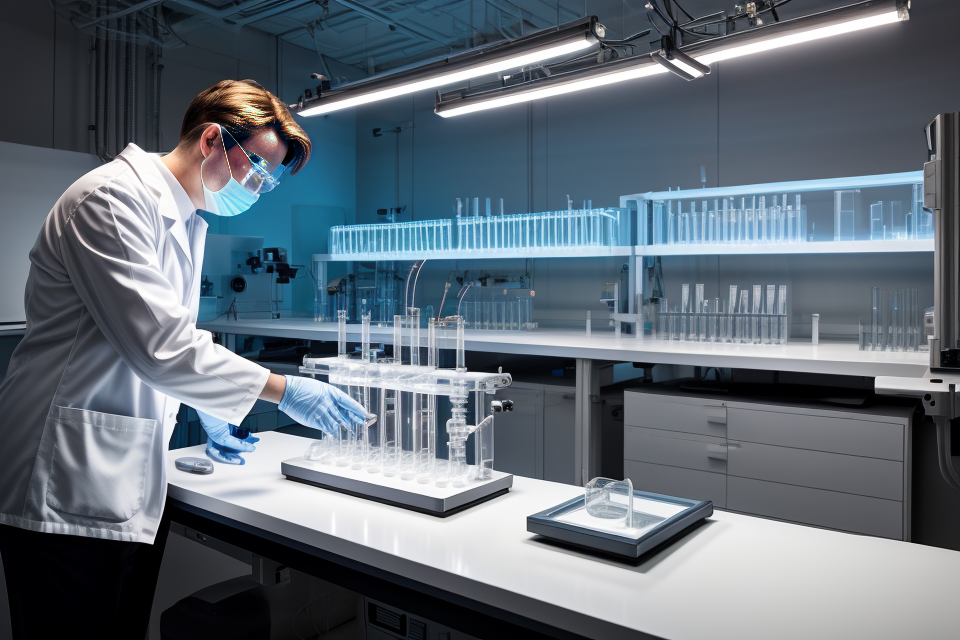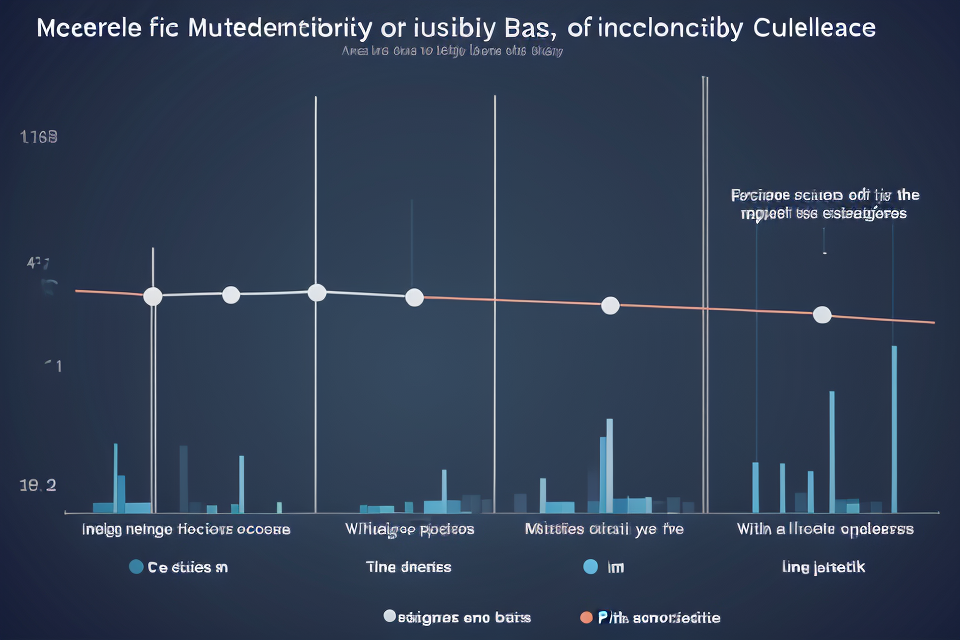
Accuracy is the degree of precision and correctness in any task or activity. It is the measure of how close a result comes to the intended or true value. The pursuit of accuracy is an ongoing process that requires constant effort and improvement. It is important in various fields such as science, engineering, sports, and even everyday life. Maximizing accuracy efforts involves attention to detail, proper training, and consistent practice. This topic explores the different aspects of accuracy and how to achieve it in various contexts. Join us as we delve into the pursuit of accuracy and discover how to maximize your efforts towards achieving greater precision and correctness.
What is Accuracy and Why is it Important?
Defining Accuracy
Accuracy is the degree of closeness or conformity to a fact or standard. It is a critical component in various fields, including science, engineering, medicine, finance, and law. The pursuit of accuracy is essential to ensure that the results of experiments, measurements, and calculations are reliable and trustworthy. In addition, accuracy is important in communication, as it helps to prevent misunderstandings and misinterpretations.
The Impact of Accuracy on Performance
- Improved performance due to increased accuracy: Accuracy plays a crucial role in determining the overall performance of an individual or a system. By achieving higher levels of accuracy, one can enhance their performance in various aspects, such as decision-making, problem-solving, and achieving goals. This improvement is evident in various fields, including sports, business, and technology.
- Case studies demonstrating the effects of accuracy on results: There have been numerous case studies conducted in different fields that demonstrate the impact of accuracy on performance. For instance, in the field of finance, a study showed that increased accuracy in financial forecasting led to better investment decisions and higher returns. Similarly, in the field of medicine, accurate diagnosis and treatment can lead to improved patient outcomes. These studies highlight the importance of accuracy in achieving optimal performance in various domains.
Understanding Accuracy: Types and Sources of Error
Types of Error
- Random errors: These are errors that occur randomly and have no discernible pattern. They are typically caused by measurement errors or incomplete data. Random errors can be minimized by taking multiple measurements and averaging them together.
- Systematic errors: These are errors that occur in a consistent and predictable manner. They are often caused by factors such as human bias or equipment malfunction. Systematic errors can be difficult to identify and correct, but it is important to investigate and address them to improve accuracy.
- Sources of errors: There are many sources of errors that can affect the accuracy of a measurement or observation. Some common sources of errors include temperature, humidity, atmospheric pressure, and lighting conditions. It is important to be aware of these sources of error and take steps to minimize their impact on the accuracy of your results.
Error Reduction Techniques
When it comes to minimizing errors in any given task, there are several techniques that can be employed to help reduce the likelihood of errors occurring. These techniques include statistical methods, error minimization strategies, and understanding the importance of errors for accuracy improvement.
Statistical Methods
One of the most effective ways to reduce errors is through the use of statistical methods. These methods involve the use of probability and statistical analysis to identify patterns and trends in data that can help predict and prevent errors from occurring. By analyzing data and identifying trends, it is possible to identify areas where errors are most likely to occur and take steps to prevent them from happening.
Error Minimization Strategies
Another effective way to reduce errors is through the use of error minimization strategies. These strategies involve identifying potential sources of error and taking steps to prevent them from occurring. For example, double-checking work, using checklists, and implementing quality control measures can all help reduce the likelihood of errors occurring.
Importance of Understanding Errors for Accuracy Improvement
Finally, it is important to understand the role that errors play in accuracy improvement. By understanding the types of errors that can occur and the factors that contribute to them, it is possible to take steps to prevent them from happening. Additionally, by analyzing data and identifying patterns and trends, it is possible to identify areas where improvements can be made to reduce the likelihood of errors occurring.
Improving Accuracy: Best Practices and Techniques
Pre-Accuracy: Preparation and Planning
Proper Planning and Preparation
The first step in maximizing accuracy is proper planning and preparation. This involves creating a detailed plan that outlines the scope of the project, the resources required, and the timeline for completion. By taking the time to plan and prepare, you can ensure that you have all the necessary information and resources to complete the task accurately.
Effective Communication
Effective communication is also crucial in the pursuit of accuracy. This means communicating clearly and concisely with all stakeholders involved in the project, including team members, clients, and vendors. By ensuring that everyone is on the same page, you can reduce the risk of misunderstandings and errors.
The Role of Documentation
Proper documentation is also essential in the pursuit of accuracy. This means keeping detailed records of all work done, including notes, sketches, and drafts. By documenting everything, you can easily refer back to previous work and ensure that you are following the correct process. Additionally, documentation can help identify any gaps or errors in the work, allowing you to make corrections and improve accuracy.
In summary, proper planning and preparation, effective communication, and the role of documentation are all essential components of the pursuit of accuracy. By incorporating these best practices into your workflow, you can maximize your efforts and ensure that your work is accurate and error-free.
Accuracy During Processing
Checking and Verification
Effective checking and verification are essential for maintaining accuracy during processing. This involves cross-checking data, double-checking work, and ensuring that all necessary information has been accounted for.
One approach is to implement a “second pair of eyes” principle, where another person reviews and verifies the work of the original processor. This not only reduces the chances of errors but also fosters a collaborative and quality-focused environment.
Monitoring for Errors
Regular monitoring for errors is crucial to maintain accuracy during processing. This includes identifying patterns of mistakes, assessing the root causes, and implementing corrective actions.
To achieve this, establishing a culture of continuous improvement and learning is key. Employees should be encouraged to report errors and share insights on how to avoid them in the future. Moreover, providing regular feedback and conducting periodic performance evaluations can help identify areas for improvement and maintain accuracy during processing.
Quality Control Measures
Implementing quality control measures is vital for ensuring accuracy during processing. This can involve establishing clear guidelines and protocols, setting up monitoring systems, and conducting regular audits.
One effective approach is to adopt a “process owner” model, where an individual is responsible for overseeing and improving a specific process. This person should be knowledgeable about the process, understand its key performance indicators, and have the authority to make necessary changes. Additionally, regular training and communication on best practices can help maintain accuracy during processing.
Post-Accuracy: Review and Improvement
Reviewing work for accuracy is a crucial step in the process of improving accuracy. It involves going over the work that has been completed and checking for any errors or mistakes. This can be done by comparing the work to a reference standard or by using a checklist of specific criteria to evaluate the work against.
Identifying areas for improvement is also an important aspect of post-accuracy review. This involves looking at the work that has been completed and identifying any areas where improvements can be made. This can include things like identifying patterns of errors, looking for areas where accuracy is consistently low, and identifying any gaps in knowledge or skills that may be contributing to inaccuracies.
Continuous improvement strategies are key to maximizing accuracy efforts. This involves making a commitment to ongoing learning and improvement, and implementing specific strategies to help improve accuracy over time. This can include things like setting specific goals for accuracy, seeking out feedback and constructive criticism, and actively seeking out opportunities for learning and skill development. By making a commitment to continuous improvement, it is possible to maximize accuracy efforts and achieve higher levels of accuracy over time.
The Role of Technology in Achieving Accuracy
Tools for Accuracy
In today’s fast-paced world, technology has become an integral part of our lives, and it has revolutionized the way we approach accuracy in various fields. The advancements in technology have provided us with numerous tools that aid in achieving accuracy. This section will discuss some of the tools that can help in maximizing efforts towards achieving accuracy.
Advanced measurement tools
Advanced measurement tools have made it possible to measure things with greater precision than ever before. These tools are used in various fields such as engineering, architecture, and manufacturing. Some examples of advanced measurement tools include laser measuring devices, digital calipers, and 3D scanners. These tools are designed to provide highly accurate measurements, reducing the margin of error and improving the overall accuracy of the process.
Technological aids for accuracy
Technology has also provided us with various software tools that aid in achieving accuracy. These tools are designed to automate repetitive tasks, reduce errors, and improve efficiency. Some examples of technological aids for accuracy include spreadsheet software, statistical analysis software, and data visualization tools. These tools help in analyzing and interpreting data, reducing errors and increasing accuracy.
Utilizing technology to minimize errors
In addition to providing tools for accuracy, technology can also be used to minimize errors. This can be achieved by incorporating technology into the process, such as using computer-aided design (CAD) software to design products, or using machine learning algorithms to identify and correct errors in data. By incorporating technology into the process, we can reduce the likelihood of errors and improve overall accuracy.
Overall, technology has provided us with a range of tools that can aid in achieving accuracy. Whether it’s advanced measurement tools, technological aids, or utilizing technology to minimize errors, these tools can help us maximize our efforts towards achieving accuracy in various fields.
Challenges and Considerations
The Impact of Technology on Accuracy
The utilization of technology has revolutionized the way we approach accuracy in various fields. With the advancements in technology, it has become easier to collect, process, and analyze data. This has led to increased accuracy in areas such as scientific research, financial analysis, and weather forecasting.
However, the reliance on technology has also introduced new challenges. For instance, the accuracy of technology depends on the quality of data input, and if the data is flawed, the output will also be inaccurate. Moreover, technology is not foolproof, and there is always a risk of human error when using it.
Limitations and Drawbacks of Technology
Despite its benefits, technology also has limitations that can affect accuracy. For example, technology may not be able to account for all variables in a given situation, leading to inaccurate results. Additionally, technology can be expensive and may not be accessible to everyone, limiting the ability to achieve accuracy.
Moreover, technology is not always up-to-date, and it may not have the latest information necessary for accurate analysis. This can be particularly problematic in fast-changing fields such as finance and technology, where outdated information can lead to inaccurate predictions.
Addressing Challenges and Optimizing Technology for Accuracy
To overcome these challenges, it is important to address them head-on. This includes ensuring that data is of high quality and is accurately inputted into technology systems. Additionally, it is crucial to regularly update technology to ensure that it has the latest information necessary for accurate analysis.
Moreover, it is important to optimize technology for accuracy. This can be achieved by using specialized software and algorithms that are designed to account for all variables in a given situation. Additionally, training personnel on how to use technology effectively can also help to optimize its accuracy.
In conclusion, while technology has greatly improved accuracy in various fields, it is important to address the challenges and limitations that come with its use. By ensuring high-quality data input, regularly updating technology, and optimizing it for accuracy, it is possible to achieve greater accuracy in a wide range of areas.
Achieving Accuracy in Practice: Real-World Applications
Industry-Specific Accuracy
Healthcare Accuracy
In the healthcare industry, accuracy is paramount. Whether it’s in diagnosing patients or prescribing medication, the stakes are high. Errors can lead to serious consequences, including loss of life. To achieve accuracy in healthcare, medical professionals rely on a variety of tools and techniques. For example, medical imaging technology such as MRI and CT scans provide detailed images of the body that can help doctors identify problems. In addition, laboratory tests such as blood tests and urine tests provide important information about a patient’s health.
However, despite these tools, errors still occur. One reason is that medical records are often incomplete or inaccurate. For example, a patient may be prescribed one medication but end up taking a different medication due to a mistake at the pharmacy. This can lead to serious problems if the two medications interact poorly. To address this issue, healthcare providers are increasingly turning to electronic health records (EHRs) to improve accuracy and reduce errors.
Manufacturing Accuracy
In manufacturing, accuracy is crucial to producing high-quality products. Whether it’s a car, a phone, or a piece of clothing, every product has specific measurements and tolerances that must be met. Errors in manufacturing can lead to defects, recalls, and even lawsuits. To achieve accuracy in manufacturing, companies use a variety of tools and techniques. For example, computer-aided design (CAD) software allows designers to create precise blueprints of products. In addition, automated machines and robots can perform tasks with high accuracy and consistency.
However, errors still occur in manufacturing. One reason is that measurements can be affected by environmental factors such as temperature and humidity. To address this issue, companies use sensors and other devices to monitor and control environmental conditions. In addition, quality control processes such as inspection and testing help identify and correct errors before they become bigger problems.
Financial Accuracy
In the financial industry, accuracy is essential to ensuring that transactions are processed correctly and that financial data is accurate. Errors in financial transactions can lead to lost revenue, legal issues, and reputational damage. To achieve accuracy in finance, companies use a variety of tools and techniques. For example, double-entry accounting systems provide a way to verify the accuracy of financial transactions. In addition, software such as financial modeling software and risk management software help companies make informed decisions based on accurate data.
However, errors still occur in finance. One reason is that financial data can be complex and difficult to interpret. To address this issue, companies use data analytics and visualization tools to make sense of large amounts of data. In addition, internal controls such as audits and reviews help identify and correct errors before they become bigger problems.
Case Studies
When it comes to achieving accuracy in any given field, real-world applications and case studies can provide valuable insights into the strategies and techniques that have been successful in improving accuracy. By examining these success stories, professionals can learn from the lessons of others and apply those lessons to their own work.
One key aspect of case studies is the ability to identify the specific challenges and obstacles that were faced by those involved. For example, a healthcare provider may study a case where a patient’s symptoms were initially misdiagnosed due to a lack of accurate testing methods. By examining the specific circumstances surrounding the case, healthcare providers can identify the limitations of current testing methods and work to develop new and more accurate approaches.
Another benefit of case studies is the opportunity to learn from the successes of others. For example, a construction company may study a case where a project was completed ahead of schedule and under budget, despite initial concerns about the project’s feasibility. By examining the specific strategies and techniques used by the company, other construction professionals can learn from their success and apply those same strategies to their own projects.
Overall, case studies can provide a wealth of information for professionals looking to improve accuracy in their work. By examining the specific challenges and successes of others, professionals can gain valuable insights and develop effective strategies for achieving greater accuracy in their own work.
FAQs
1. What is accuracy?
Accuracy refers to the degree of correctness or precision in a given task or measurement. It is the ability to achieve the intended result or outcome without error or deviation from the expected outcome.
2. Why is accuracy important?
Accuracy is important because it ensures that the desired outcome is achieved in a given task or measurement. Inaccurate results can lead to costly mistakes, wasted resources, and even dangerous situations. Therefore, accuracy is crucial in various fields such as science, engineering, medicine, and business.
3. How can accuracy be improved?
Accuracy can be improved by using appropriate tools and techniques, following established protocols and procedures, and conducting thorough training and education. It is also important to continuously monitor and evaluate results to identify areas for improvement and to ensure that accuracy is maintained over time.
4. What are some common sources of inaccuracy?
Common sources of inaccuracy include human error, faulty equipment or instruments, lack of standardization, and environmental factors such as temperature, humidity, and lighting. It is important to identify and address these sources of inaccuracy to improve overall accuracy.
5. How does accuracy differ from precision?
Accuracy and precision are related but distinct concepts. Accuracy refers to how close a measured value is to the true value, while precision refers to the degree of consistency or reproducibility of a measurement. A measurement can be accurate but imprecise, precise but inaccurate, or both accurate and precise.


